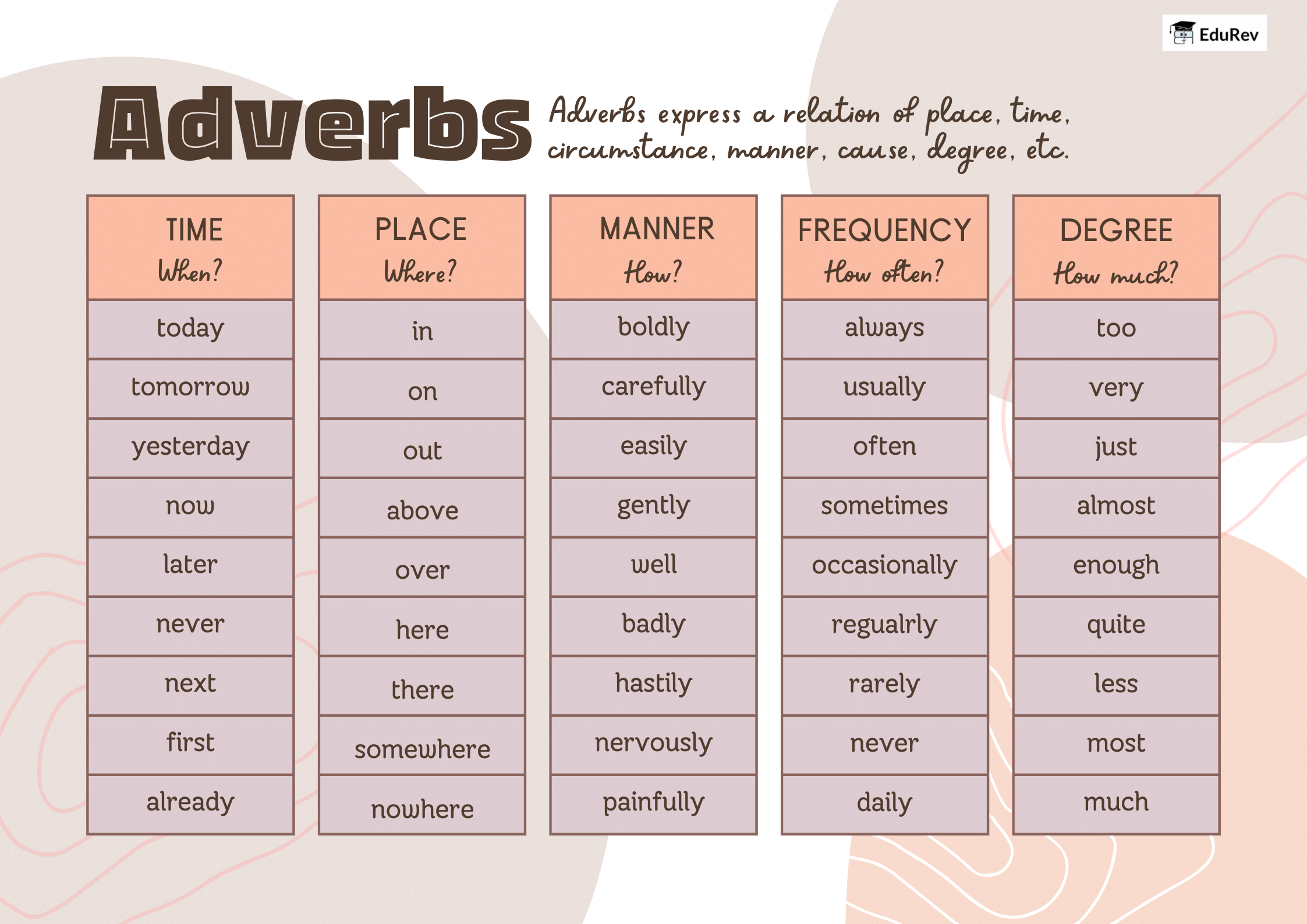Class 7 Exam > Class 7 Notes > English Grammar Class 7 > Infographics: The Adverb
Infographics: The Adverb | English Grammar Class 7 PDF Download

The document Infographics: The Adverb | English Grammar Class 7 is a part of the Class 7 Course English Grammar Class 7.
All you need of Class 7 at this link: Class 7
|
39 videos|391 docs|61 tests
|
FAQs on Infographics: The Adverb - English Grammar Class 7
| 1. What are adverbs and how do they function in a sentence? |  |
Ans. Adverbs are words that modify verbs, adjectives, or other adverbs. They provide additional information such as how, when, where, to what extent, or why an action is performed. For example, in the sentence "She runs quickly," the adverb "quickly" modifies the verb "runs" to describe the manner of running.
| 2. Can you give examples of different types of adverbs? |  |
Ans. Yes! There are several types of adverbs, including:
1. Adverbs of manner (e.g., quickly, slowly, carefully)
2. Adverbs of time (e.g., yesterday, now, soon)
3. Adverbs of place (e.g., here, there, everywhere)
4. Adverbs of frequency (e.g., always, sometimes, never)
5. Adverbs of degree (e.g., very, quite, too). Each type serves to provide specific details about the action or state in the sentence.
| 3. How can I identify adverbs in a sentence? |  |
Ans. To identify adverbs in a sentence, look for words that answer questions such as "how?", "when?", "where?", "to what extent?", or "why?". Many adverbs can be recognized by their endings, such as "-ly" (e.g., quickly, happily), but not all adverbs follow this rule. Reading the sentence carefully will help determine the function of the word.
| 4. Are there any rules for placing adverbs in a sentence? |  |
Ans. Yes, the placement of adverbs can affect the meaning of a sentence. Generally, adverbs of manner are placed after the main verb or the object (e.g., "She sings beautifully"). Adverbs of time and frequency often appear at the beginning or the end of a sentence (e.g., "Yesterday, I went to the store" or "I went to the store yesterday"). However, the context may dictate the best placement for clarity.
| 5. How do adverbs differ from adjectives? |  |
Ans. Adverbs and adjectives serve different purposes in a sentence. Adjectives modify nouns and pronouns by providing more information about them (e.g., "The tall building"), while adverbs modify verbs, adjectives, or other adverbs, offering details about actions or qualities (e.g., "She is extremely talented"). In summary, adjectives describe nouns, whereas adverbs describe actions or qualities.
Related Searches
















